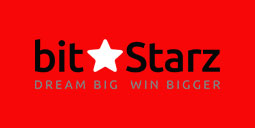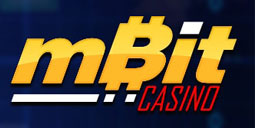Binance Backs $32 Million Funding for Unicorn Founder's Crypto Stablecoin
The project seems focused as a digital payments, on among the early use cases that are touted of bitcoin rail in comparison with the incumbents.
The leader in blockchain information, CoinDesk is a media outlet that tries for the highest journalistic standards and abides by a strict series of editorial policies. CoinDesk has been also an independent operating subsidiary of Digital Currency Group, which invests in blockchain startups and cryptocurrencies.
“As we incorporate with much more e-commerce spouses, we have the ability to distribute that money back into e-commerce businesses and their consumers in the kind of kickbacks and reductions,” Shin said.
What Terra nevertheless needs is a host blockchain — a issue for many projects today. The protocol will operate together with one of the current projects; Shin stated either ethereum, EOS, Orbs, messaging giant Kakao’s Ground X and also the coming project from Upbit, among the markets of Korea.
Announced Tuesday, the founder behind a $1.4 billion startup unicorn named TMON is revealing he’s increased a $32 million seed around to construct a stablecoin named Terra. But while several startups have deployed stablecoins — cryptocurrencies designed to track the cost of some other asset, generally fiat money — Terra includes a notable improvement: an current user base.
Investors from the seed around bought tokens in the pool of 400 million luna tokens (a fixed source of a billion luna tokens would be created) set aside for these.
Produced by Korean entrepreneurs Danial Shin, who chairs TMON, among the greatest e-commerce sites in South Korea and established, the Terra project is launching with a significant number of partners who reach 40 million customers. Those partners, who will together form the Terra Alliance, a set of e-commerce sites which are considering incorporating the stablecoin into their business, include Qoo10 Woowa Brothers, Carousell, Pomelo and TIKI.
“Luna is essentially a decentralized equity akin to Visa and Mastercard.”
Echoing that, Ella Zhang, head of Binance Labs, said in a statement:
Then every time a transaction occurs on the system, a transaction fee will be paid for holders of Luna.
That use, based on Shin, is currently in acting as an economical payment system, compared to bank cards.
However, Shin doesn’t seem phased by this, telling CoinDesk that even though the focus will be on the Asian market, that’s only the start of the aspirations of the project.
“While we view many stablecoins coming outside, Terra’s travel is especially meaningful as they’re designing one of the very few price-stable protocols with present, functioning and strong go-to-market strategy and usage.”
Much as with stablecoin projects, oracles on the network will track need and supply. As the use of terra grows, it will issue new tokens.
To do that, the Terra protocol utilizes two tokens: luna and terra.
“We’ve banded together all of the e-commerce platforms in Asia which are not known as Alibaba or Amazon to drive Terra to the palms of many many people,” Shin informed CoinDesk.
“We are very happy to encourage Terra, which sets itself apart from the majority of other blockchain endeavors with its established and instantaneous go-to-market strategy,” said Polychain’s Karthik Raju at a statement.
CoinDesk was informed by shin:
It is no surprise that the round comprises quite a few notable crypto investors, including Polychain Capital, FBG Capital, Hashed, 1kx, Kenetic Capital, Arrington XRP, Binance and many others .
All these luna tokens function as collateral on the network. Their sale will supply an initial reserve which will help stabilize the cost versus fiat, even as Tether does now. Terra, the token, will behave as the payment method that is daily that consumers will use when the protocol goes live. As necessary based on demand It’ll be emitted.
If companies like his can reduce transaction fees dramatically Having said that, he believes they stand a better chance against the industry giants.
According to a spokesperson for your undertaking, those businesses earn $25 billion in sales.
He told CoinDesk, that a significant part of the annual losses of TMON take the form of credit card fees. And he is sure other retailers encounter exactly the same.
The benefit to retailers and consumers will be that these new issuances will be employed to offer discounts to people who use the token. Thus, for instance, if the protocol has issued a bunch of terra, retailers might be able consumers a 10 percent discount on purchases made with the token — which is before the new supply runs out.

Yet another stablecoin is bringing big investors.
He continued:”What we’ve discovered watching Visa and Mastercard inventory prices every year, it is really smooth.”
“We believed deploying the design from the U.S. where crypto adoption is extremely low, makes very little sense,” Shin said, adding:”I feel the vision is international.”
For your new alliance of businesses,”the dedication really is that they will work together to a more effective type of repayment, obviously using blockchain engineering,” he continued.
Binance Backs Million Funding for Unicorn Founder's Crypto Stablecoin - May 2024
EXPERTLY REVIEWED
MOBILE FRIENDLY
FAST PAYOUTS
- CasinoRatingBonusVisit Casino
Get your 100% Match Bonus up to $1000!
200% match bonus up to 2000
Up to 5 BTC
Get up to 1 BTC on First Deposit!
Get your 5 BTC Welcome Bonus
Bitcoin Current Price
Top Rated

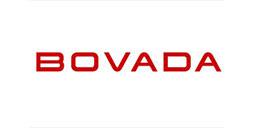


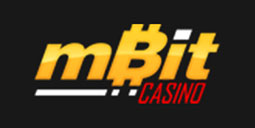
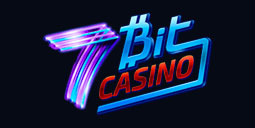
Search
Casino List
- 7bit Casino
- Bovada Casino
- Bitstarz Casino
- Ignition Casino
- Sun Palace Casino
- Aladdin's Gold Casino
- Casumo Casino
- Lucky Red Casino
- Fortunejack Casino
- Mbit Casino
- Mars Casino
- Club World Casinos
- Slotocash Casino
- Drake Casino
- Grand Fortune Casino
- High Noon Casino
- Royal Ace Casino
- Cafe Casino
- Raging Bull Slots
- Oshi Casino
- Betchain Casino
- Casino Extreme
- Vegas Casino.io
- Bitcoin Penguin Casino
- Joe Fortune Casino



